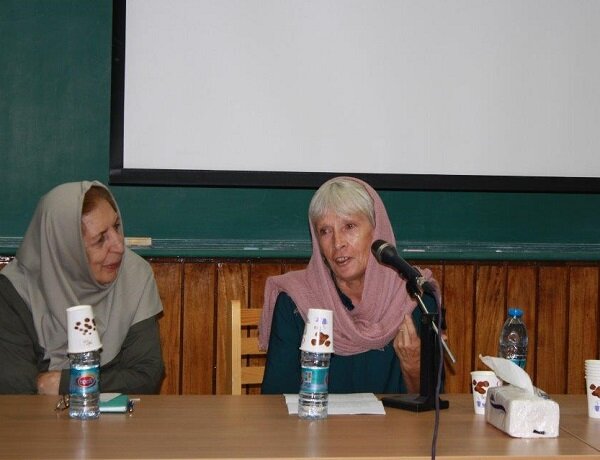TEHRAN, Sep. 23 (MAN) – The University of Tehran, in collaboration with the Polish embassy, organized a program on Sunday in honor of Professor Barbara Kaim, who has made valuable achievements while conducting extensive research and excavations in Iran.
Professor Barbara Kaim is a renowned scholar and scientist from the Warsaw University, Poland, specializing in the archaeology of Iran and Central Asia.
Her archaeological excavations in Turkmenistan and Persia, particularly the Sassanian era, shed more light on the culture and heritage of Iran. Her focus has been directed to fire temples in Central Asia for the most part. Since 1997, Prof. Kaim has been conducting excavations in the Serakhs region in Turkmenistan, in the remnants of one of the best preserved Partho-Sasanian temples. This experience enabled her to compare the Central Asian temples with the Iranian ones and then share her knowledge with Iranian scientists. She is also an author of many publications on the Zarathustrian fire temples, as well as ancient Iranian art and culture.
Her mission in Iran started back in 2004, upon receiving an invitation from former director of the Iranian Center for Archaeological Research, to study important archaeological remains of a fire temple in the Razavi Khorasan province.
Later on, she came back with a Polish team of archaeologists to participate in a rescue excavation program in Tang-e Bolaghi, situated at a short distance from the important Achaemenid site of Pasargadae, which was feared to be submerged by the creation of an artificial lake in the vicinity of the area.
Her extensive excavations have led to unearthing important evidence of rural settlements in the area.
The program, held at the Faculty of Humanities and Literature at the University of Tehran, was attended by a group of enthusiastic archaeology students, as well as the Polish Ambassador to Tehran Maciej Fałkowski, Iranian professor and chairman of the department of Ancient Iranian Culture and Languages Jaleh Amouzgar, Post-Doc researcher in Archaeology at the Faculty of Literature and Human Science of the University of Tehran, Dr. David Meier, and a number of other notable figures in the field of archaeology, and of course Prof. Barbara Kaim herself, who gave a short introduction of her work in Iran, and answered some questions posed by the press and students present at the event.
Speaking at beginning of the program, Polish Ambassador Maciej Fałkowski praised Prof. Kaim’s extensive contribution to the research on the Iranian history, also by bringing here the results of her archaeological studies on fire temples in Turkmenistan.

He made note that Poland’s interest in the Persian culture began in Safavid period when Poland pursued diplomatic and economic relations with Persia. The first academic studies on Iran, however, he said were undertaken at universities only by the end of the 19th century. They were further continued and extended after Poland regained independence in 1918.
The ambassador also maintained that many of the Polish refugees arriving in Iran from Soviet Russia in 1942, were Polish intelligentsia and professors, who, despite the hard conditions and everyday fight for survival, established the Iranian Studies Association in Tehran.
He added that their legacy is today continued by the young generation of scholars and supported by exchange programs for students and researchers. “There are about 150 Iranian students in Poland now,” he said.
The ambassador further voiced hope to see new astonishing results of this academic cooperation between Iran and Poland.


No comments:
Post a Comment